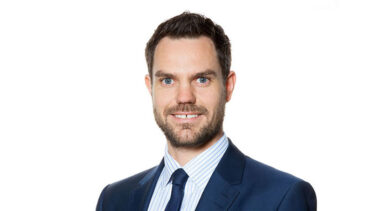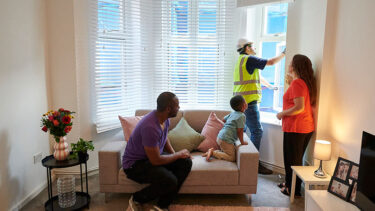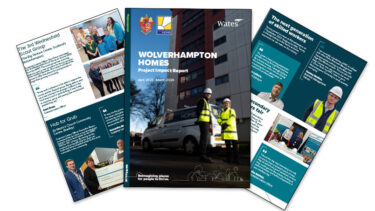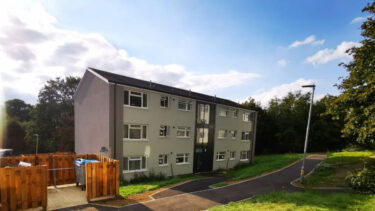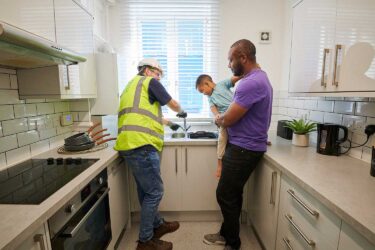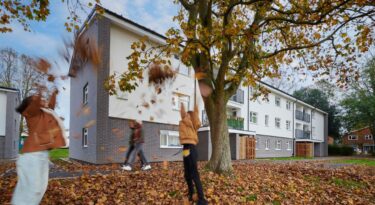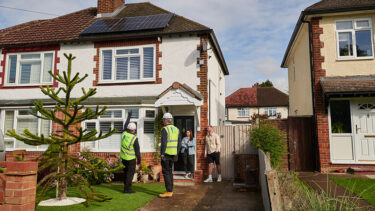
In a world centred on the customer experience, and accepting only of 10/10 customer satisfaction scores, getting the job done right-first time is simply not enough.
In this article, we look at how outstanding communications and engagement with residents in the social housing sector can enhance overall project and business performance.
The silence is frustrating. No-one knows what’s happening. There’s little or no communication and a complete lack of control. No-one responds well to that.
This situation is repeated countless times, in countless situations, and normally has very predictable outcomes: customers feel hard done by, and they let you know about it.
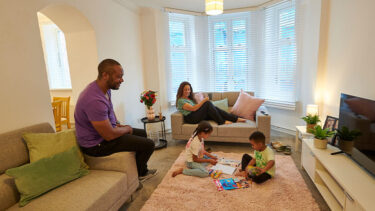
See the world from others’ perspectives’
As businesses with people – residents – at the core of what we do, we can rewrite this very simply: deprioritise what we want (or don’t want) to say, put ourselves in others’ shoes and think through what they want. It’s the foundation of great communications and engagement.
In normal, day-to-day interactions – checking a meter, investigating a water leak, servicing a boiler – it’s important stuff. The stakes become notably higher, though, when the scope of work broadens. In our world – helping to maintain the safety, security and efficiency of the nation’s housing stock – this could mean major refurbishment or retrofitting properties to support decarbonisation ambitions. At this scale and level of intervention, communications and engagement become critical success factors. The key is achieving equality of emphasis on both ‘communications’ and ‘engagement’
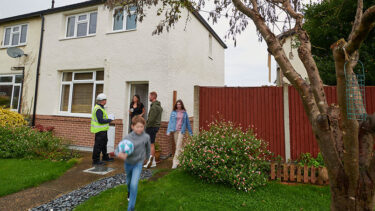
Bringing residents with you on the journey
Communications often gets a tick in the box because a letter has been sent or a door-drop delivered. We know, though, as customers ourselves, that what really works is human interaction; where people are actively listening to what we have to say, taking us into account, responding positively to our questions and thoughts, and settling our concerns.
Residents, whether in socialor private housing, will generally be keen to see improvements to the properties in which they live. But refurbishing a kitchen, or retrofitting new windows and external wall insulation will always be an intrusion. Part of our responsibility in the delivery of this work, it is important we bring residents with us on the journey – both tenants and leaseholders
We’ve seen the effectiveness of this approach on a decarbonisation retrofit for a council in North London. A large number of homes – over 500 – are involved across multiple flat conversions in urban Victorian houses. Mixed-tenure residents along with varying levels of acceptance for the work being undertaken – from enthusiastic early adopters to cautious leaseholders – necessitate that consistent, empathetic, informed engagement are placed front and centre on the critical path.
In complex environments like this it’s crucial that sufficient time is built into the programme to allow meaningful consultation, particularly, as in North London, leaseholders, can have a substantial financial stake in the building. Added to that, they often have no means of mitigating the cost coming their way and have no control over materials, technology or contractors. They are effectively paying customers without a choice. No-one should underestimate the importance of this and the influence communications can have on the overall effectiveness of the programme.
To this end, Wates encourages Very Early Engagement (VEE). Typically, refurbishment/retrofitting is top-down in nature, with the programme and activity largely thought through before taking the plan to residents. This often throws up unforeseen issues, which VEE can help minimise. It introduces the principles of co-creation, so that the main stakeholders become part of the thinking process, and the loss of control over their lives that residents often feel is diminished. They have a voice, and the client and supply chain have early exposure to issues or ideas at a point when they can much more easily, and usually much more cost effectively, be catered for. It carries an element of risk in that not everyone’s concerns or thoughts can be accommodated, but this can be mitigated through skilled engagement. Prior knowledge is a precious commodity.
At the root of this is a desire to do right by residents; to respect them as individuals, and collectively as a community. We also need to consider the impact – financially, socially and environmentally – that access refusals can introduce. These are rare; the overwhelming majority of people want improvements – to the point that, often, there is greater demand than there is budget. However, refusals – for whatever reason – add up. Projects rarely stall in these circumstances, but at some point that backlog will need to be eliminated. We communicate effectively to bring people with us, to reduce refusals, and then where necessary, prepare to resume engagement when the time comes to address the outstanding work.
Still in London, but in this case, to the south-east of the capital, bringing residents into the conversation early has been critical for gaining buy-in.
The range of buildings in the project needed different solutions so working directly with individuals to clearly explain what would be intrusive and lengthy processes has proved its worth. In support of this, a pilot project was carried out under permitted development to ensure the scheme’s viability and to provide a blueprint to replicate going forward. Alongside this, Wates committed two full-time resident liaison officers permanently on site, as well as two site managers with engagement responsibilities. The result of the investment has been a much greater understanding of the benefits the work will bring, reduced hesitancy about having it done, and to date, zero cases of residents denying access to their homes.
To meet our obligations to residents, and to minimise risk, Wates has developed the ‘Getting to know you and your home’ programme. It maps the customer journey, giving clarity around the touchpoints, the collateral and the technology. It builds a targeted and personalised engagement plan. It provides residents with guide notes on what is going to happen and why, and ultimately how to manage their home going forward.
This allows us to understand and adapt to individuals (are there any special considerations we need to allow for – are there night shift workers to take into account; are there school runs in the household; are there health-related matters we need to consider; and so on). It’s a state of mind as well as a process. The two work hand-in-hand: the process provides structure and rigour, but it has to be constructed in such a way that it can flex to accommodate individuals and their needs.
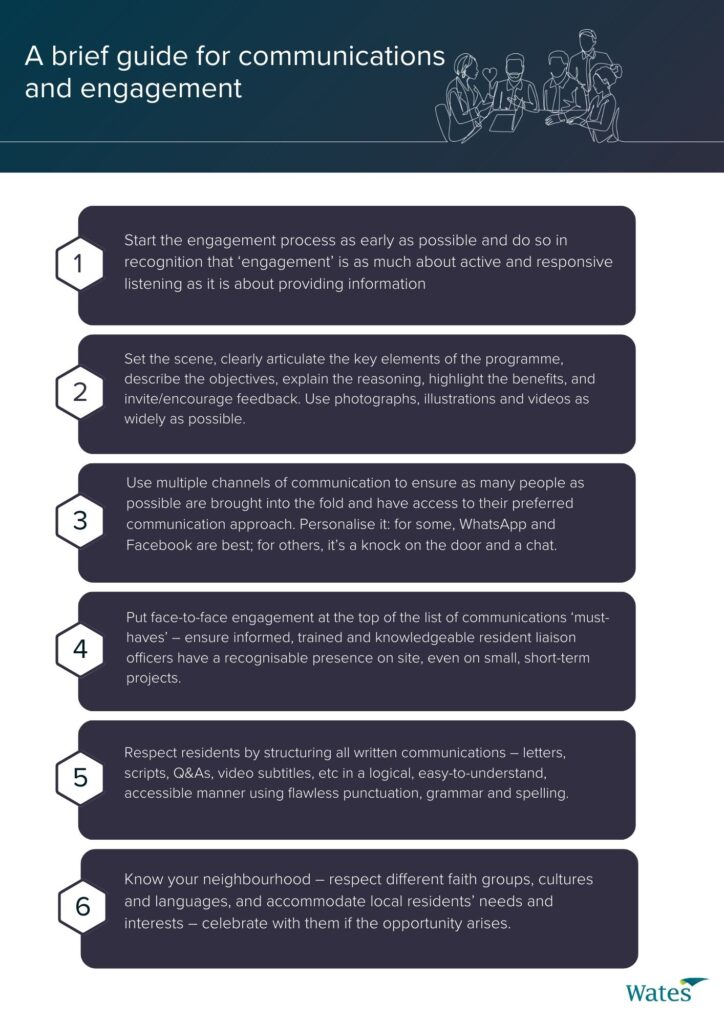
Download the infographic
The result will be a reputation-building project that will feed into the business’s ability to work collaboratively and effectively with residents when new events and projects emerge. Partnering, in whatever form, but particularly with respect to business-to-resident communications, is by its nature a much more effective delivery model, reducing tensions, creating early adopters and helping to drive improved business/project performance.

